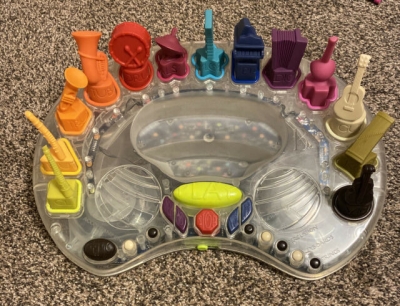Welcome to our forum. A Message To Our New and Prospective Members . Check out our Forum Rules. Lets keep this forum an enjoyable place to visit.
Currently working on errors from the latest (SimplePress) forum update. Many issues have been resoled and others are being worked on. Thank you for your patience.
 Topic RSS
Topic RSS



 (17 votes)
(17 votes) Regulars
 Offline
Offline

@ELCBK and others.
The method described in your linked article hacks the tuning of a chromatic tuner by adjusting the a=hertz number for each string. Life is too short for me to consider that. I suggest you download an app to a smart phone for a few dollars (my electronic tuner that offers different tunings is fragile and costs many times more used on eBay).
My fingers naturally go to the right space with Pythagorean tuning because my brain no longer needs to accommodate tuning “errors.”
As for the adjustment of fingerboard cheat lines from lower tuning; I needed to start at a lower tuning pitch when I started the cello (a=432) and I increased the tuning 2 hertz a month as my fingers got stronger. The lines did not move for that experiment. Nut to bridge distance remained constant.
My reasoning for this was based on an Ancient Greek wrestler that carried a bull calf on his shoulders throughout the day as a training method. He was undefeated for a span of several olympics (I go into it more on another thread).
Success is the progressive realisation of a worthy ideal. —Earl Nightingale.
Regulars
 Offline
Offline

@ELCBK . One of my favorite books is Circus Doctor by J. Y. Henderson. If possible, get an old copy of the hard cover since the more recent paperback is greatly abridged. He was the large animal animal vet for Ringling Brothers Circus. The grand kids would love it.
Success is the progressive realisation of a worthy ideal. —Earl Nightingale.
Regulars
 Offline
Offline








So, my experiment in subliminal violin education may not have gone as planned...
Later, the Kids were asked if they think they would like to learn to play the violin - only the 2nd oldest (6) piped up, "I'd like to but Mommy won't let me play a instrument in the house". I think this had to do with when she got her hands on a plastic recorder and tooted 1 very piercing note (loudly) for 2hrs!
The remaining Kids expressed they'd rather learn traditional Japanese magic. 
Maybe next time I'll lead with this video -
At least they've enjoyed watching "music theory (for kids)!
Actually, I probably need to just keep showing them little kids their age playing with the violin.
- Emily
Regulars
 Offline
Offline

@ELCBK and others. I often see golf clubs on the side of the road. I do not play but I think the term I want is an iron. It has a shaft with a metal projection on the end with which to hit the ball. If a small hole were drilled near the end of the projection and a means to wind a string made near the grip, an air filled balloon (acting as a bridge) should project sound when the string was plucked. The pitch would change when a finger depressed the string on the shaft. Might work.
Success is the progressive realisation of a worthy ideal. —Earl Nightingale.
Regulars
 Offline
Offline

@ELCBK . I have edited original post to reflect an air filled balloon. The golf club was referenced due to being easily obtained and having a rigid structure. The down side is they offer a lot of angular momentum if used as a clubbing mechanism.
Success is the progressive realisation of a worthy ideal. —Earl Nightingale.
Regulars
 Offline
Offline

@ELCBK and others. I am currently working on a unsolicited study to update a space toilet for nasa (who is dangling a cash reward for new ideas). Bocaholly is acting as my editor and is in a constant state of hysteria over its contents.
I am also thinking of making a viola with a styrofoam corpus, using this photo as an example. I keep things lively at the homestead.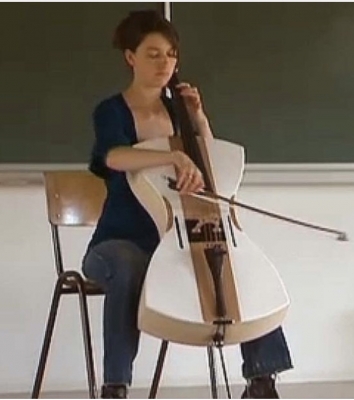

Success is the progressive realisation of a worthy ideal. —Earl Nightingale.
Regulars
 Offline
Offline








We got a little off track in this thread!

I recently bought the "Beginner Violin Theory For Children - Book One" by Melanie Smith, from FIDDLERSHOP (hint, hint) & thought about posting a "Review" on the forum (did at the Fiddlershop). I decided it might be better served in this thread.
Here's my review -
"What little kid doesn't love an activity book (no such animal)!
Almost all of my Grandkids are enjoying the interactive learning from this book (the youngest isn't 2, yet - so he doesn't really count).
We've only just begun, but it's a wonderful learning aid - helping our youngest Grandkids' step into the new "World of Written Music" after learning to sing "Do, Re, Mi" from the "Sound of Music".
Invaluable tool to help children explore the language of music (and how to identify parts of a violin/bow) - while having FUN!
I only have one problem with this book... it doesn't show/explain the relationship between the "Violin" and written music. Maybe fixed by labeling the strings and pointing out which string the notes are on, etc..."
The more I think about it, I really don't see "Violin Theory" here (as the book title implies) - just some basic Music Theory.
I think it is important to show (early on) what a violin's relationship actually is to written music, at least how this language is connected to the violin strings.
![]() Maybe it is addressed in subsequent books, but it could have made a HUGE impact in this book! Okay, puts me in the position where I have to address it with the Kids & they don't want to listen to "Nana", but if it's in a "Book"... it's a whole other story (lol).
Maybe it is addressed in subsequent books, but it could have made a HUGE impact in this book! Okay, puts me in the position where I have to address it with the Kids & they don't want to listen to "Nana", but if it's in a "Book"... it's a whole other story (lol).
Well, maybe I can come up with a supplemental page or 2 for the Kids (sigh) - really don't want to think about writing a book for toddlers, right now (lol).
Even so, I want to recommend this book - IT'S A GREAT BOOK FOR YOUNG CHILDREN (or your Grandkids)!

Here's the actual Book's description -
This book is designed as a workbook to teach theory specifically relevant to the violin at a level that is attainable and challenging, yet fun for young children. It is intended to build confidence and solidify the relationship between theory and playing. Children will enjoy the drawing and coloring activities in the book, while developing the fundamentals of violin theory at the same time. The book can be used to teach beginners the basics of theory, or even to refresh musicians who might need a small review of violin theory. No matter who uses this book, it will give a strong foundation to violin theory, and through this understanding will foster a greater love of playing. Concepts covered in this book include: learning the parts of the violin; learning about line and space notes; learning musical symbols; and how to draw music
Regulars
 Offline
Offline





The thought of both teaching violin to a "toddler/pre-school kid" - and buying them books of theory too - worries me a bit. If they have shown a love of playing, then I might buy them an activity book, but not before.
I'd suggest, teach them to sing songs they can play on the violin, then teach them to play them on the violin.
In order of difficulty (i.e. rhythmically)
Twinkle Twinkle Little Star
Old MacDonald had a Farm.
Happy Birthday to You
That's enough to be starting with.
I wouldn't normally recommend Suzuki, but book 1 is aimed at the right level and age group.
Andrew
Verified human - the ignominy!
Regulars
 Offline
Offline








Gordon Shumway -
Guess this book just helps with "preparing for the violin".
Been singing, but the kids don't quite have the interest for trying the violin, yet! Probably a lot to do with I haven't been able to spend much time with them lately.
They're just having fun learning about music in general here - by counting, drawing, matching, etc...
 - Emily
- Emily
Regulars
 Offline
Offline








@Fashionandfiddle - You might be interested in this for your children - said you've got 2 little ones?
Wanted to recommend one of the educational toys I found for my Grandkids' Christmas this year - pertaining to early learning of music, in general.
It's an ingenious puzzle that my 5-year-old Grandson especially liked! He'd already read about music notes in a book, but didn't know about rests. Most of the Kids found it interesting and wanted to check it out - even though Christmas was pretty chaotic with 7 little ones. (lol)
All the notes are represented, including dotted and barred. One side shows a note and the other side show a rest of equal value.
The size of the pieces correspond to the time value of each note - so they learn more about fraction, too! There is a version available with fractions on the back, instead of rests - also versions with nothing on the reverse side.
...bought mine at etsy.com - PM me if you want the specific link. 😊
- Emily
Regulars
 Offline
Offline








Guess I forgot to post my great find of last year's (2020) Christmas, even though I remember talking about it somewhere.
B. toys by Battat B. Symphony Musical Toy Orchestra for Kids – 13 Musical Instruments for Classical Music for Babies and Toddlers – Interactive Kids Music Toys with Lights and 15 Songs.
The Grandkids STILL LOVE THIS! They can 'compose' their music by adding in whichever instrument group they want (or take away) at any given time. It allows them to hear the sound interaction between groups of instruments - and the impact each has on the whole piece. I think there's a limit of something like 6 at a time... but I could be wrong.
I also forgot to mention one of the biggest attractions for my Grandkids for THIS year, was the 2 Otamatones I gave them! All of them, except the 1-year-old, went crazy over these. I was afraid they'd be broken before the night was over - but not yet!
It has a fretless neck you can press on throughout the length (like a single string) to find each note - or slide! The fat part can be squeezed open a bit (where the speaker is located) to produce a 'wah, wah' effect.

These were especially good for the 5 to 9-year-olds, the 3 & 4-year-old did try it though, but you have to apply some pressure to the sound strip.
...I bought a package of the 2 that look like cats, or raccoons. (lol)
- Emily
Regulars
 Offline
Offline








Recently remembered another possible learning tool for Kids - or for Adults who are just beginning & want to learn to read music while learning to play the violin.
💖 FLASH CARDS!
A proven method of learning, I bought these before I joined the forum - when I first started learning to play the 5 string violin.
One side describes the note and where located - the other side shows the music notation.
💖 "Notes and Strings, Violin 1st Position, 2"X2.5" Mini-On-A-Ring Size, Laminated Flashcards."
💖 Also for Viola and Cello!
💖 Besides 1st Position, these are available for 3rd Position, also!

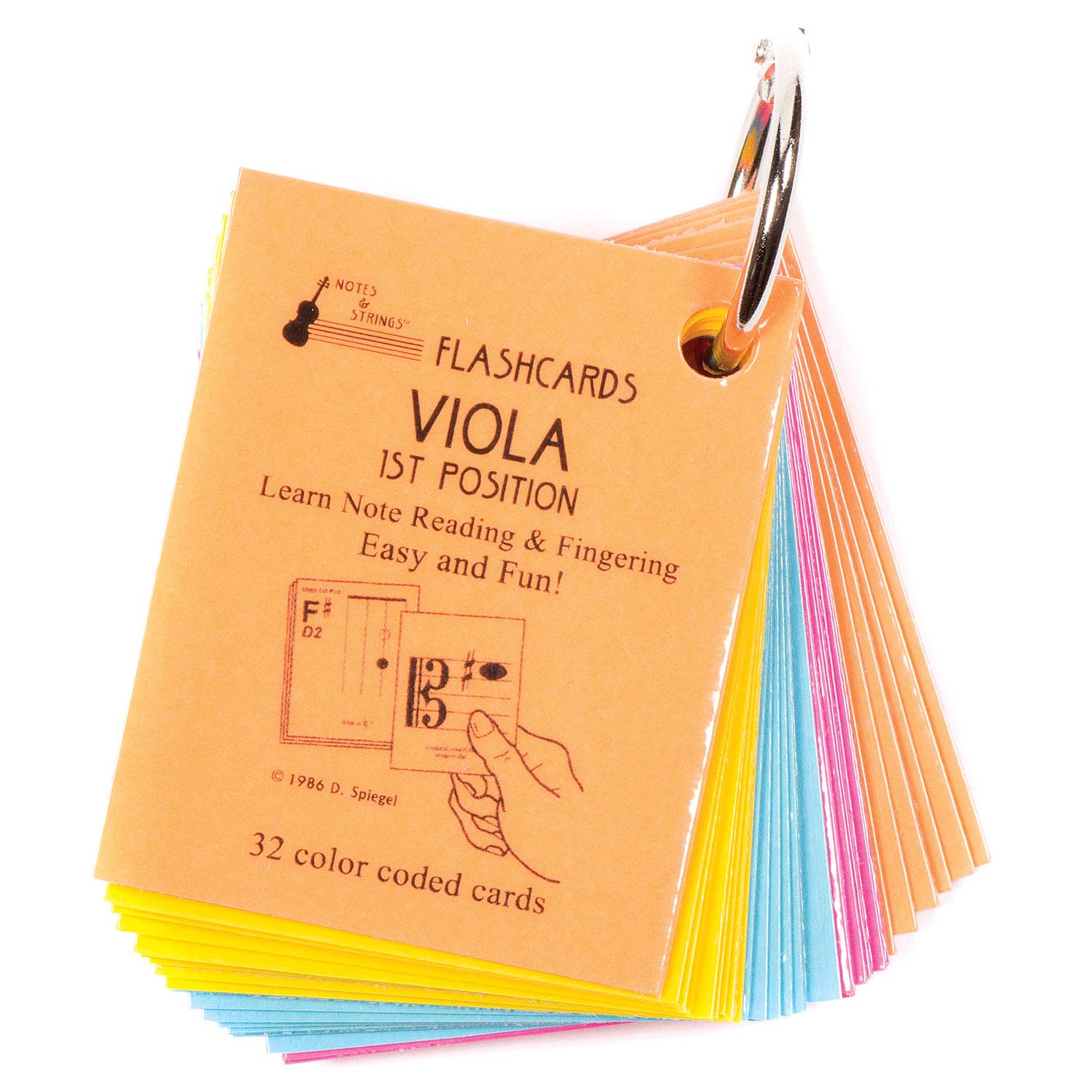
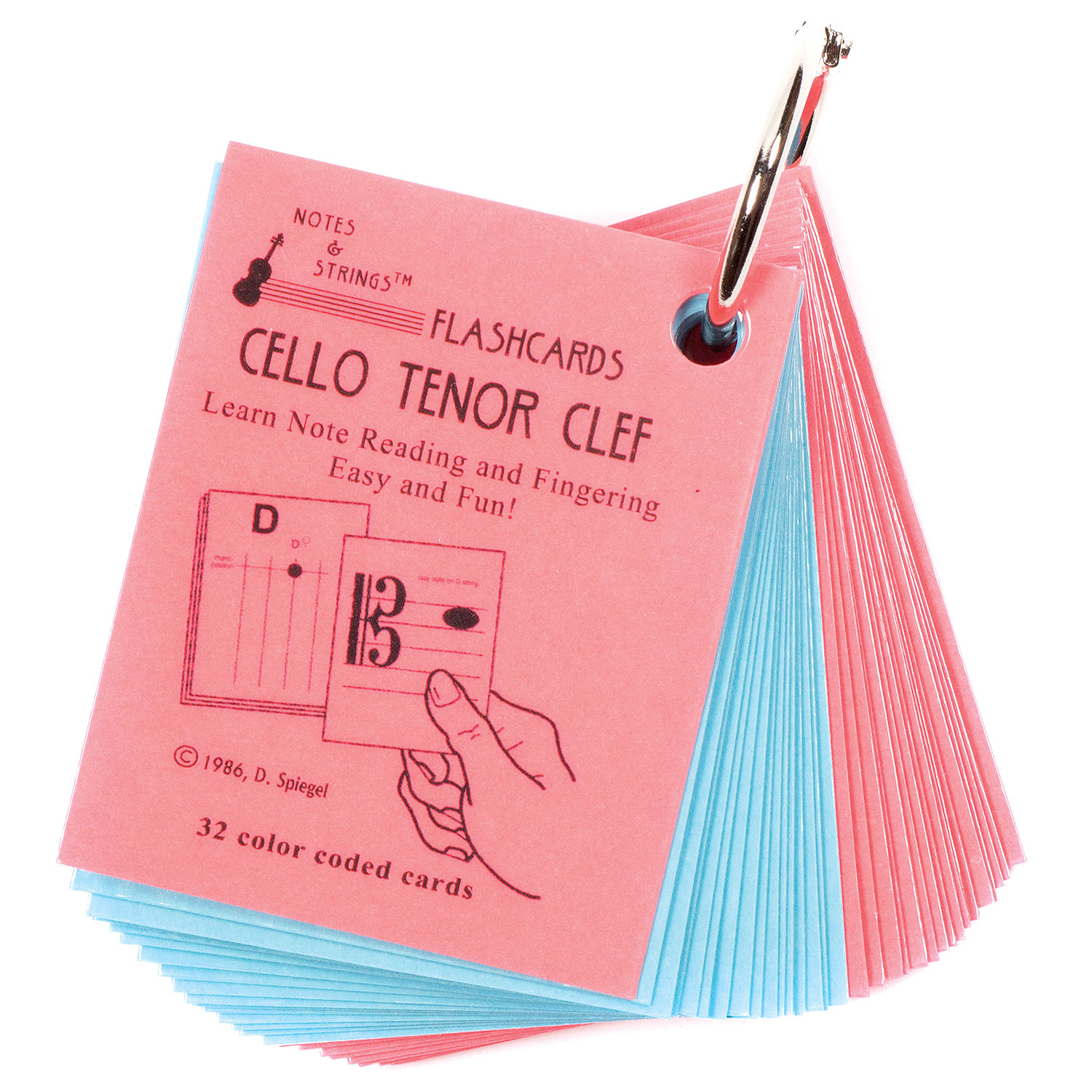
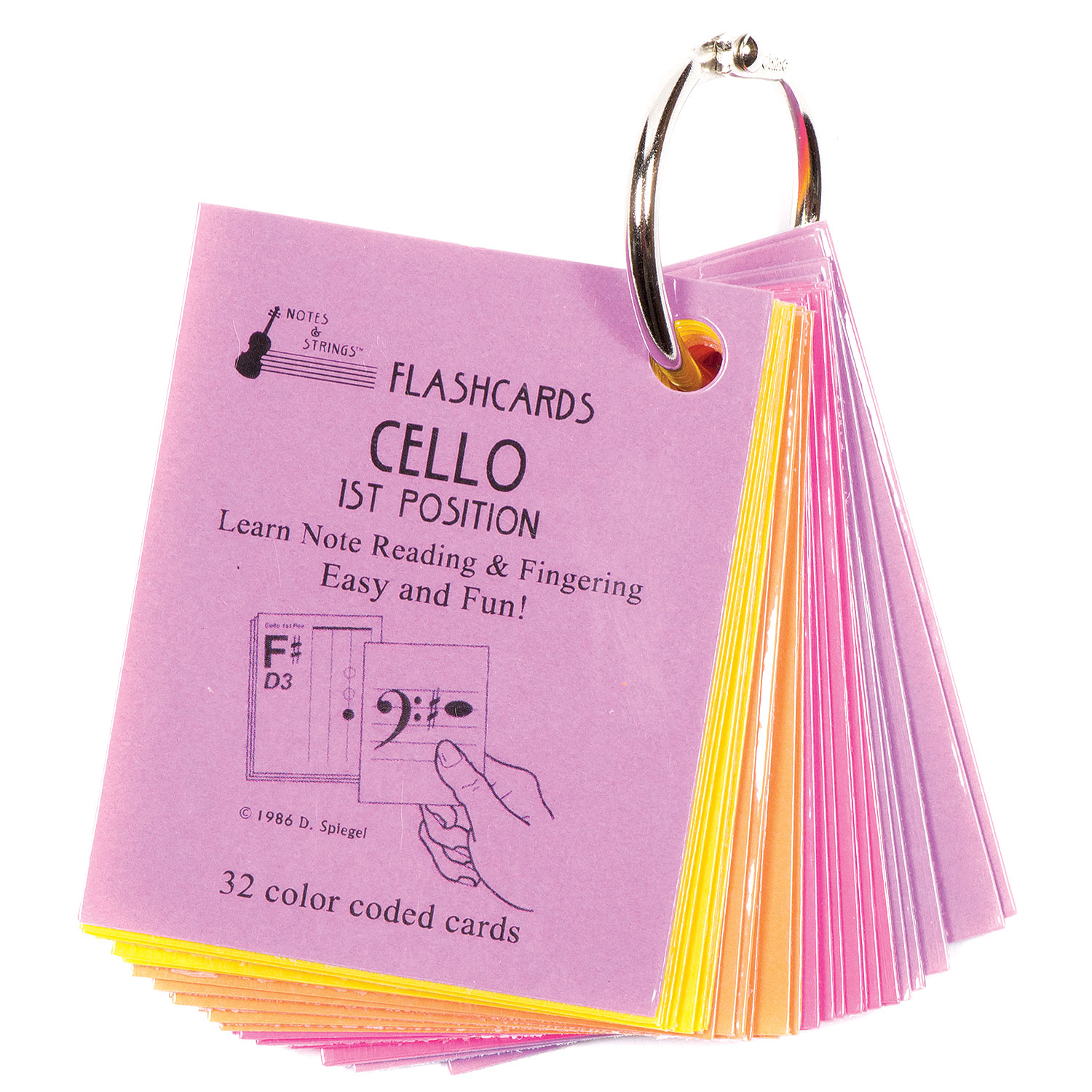

💖AND, there are other helpful Flash Card sets for Music, not as small or laminated - like the (above) "Maka Violin Flash Cards" show an illustration of hand/finger position for each note.
💖 Also, Music Theory Flash Cards!

💖 There are Flash Cards available for Rhythym, too!
💖 Amazon has a "Music Theory Flashcard Mega-Pack" (5 Packs) available - "Treble & Bass Clef Notes", "Music Scales" (Major, Harmonic, Melodic & Natural Minor), "Triad Spelling" and "Seventh Chords"!
💖 There are also "Online Music Flash Cards" and Free 'Printable Flash Cards' available online.

So, for Kids and Adults new to learning music - I'd recommend trying Flash Cards!
- Emily
Regulars
 Offline
Offline








@Fashionandfiddle -
I like watching videos etc too but I am a terrible bookworm lol! Something I inherited from my Grandmother....think my children are the same, I find them asleep at night with about five books each in bed.
The Violin star books are the ABRSM books, so I think aimed really at any age child starting. They have lots of lovely pictures and this helps to make each page look more fun and less daunting. It comes with a CD too. They also do a Violin star theory activity book which I think has stickers with it. We also had Fiddle time starters which has a series of books and gets really good reviews but I/we think we prefer the Violin star.
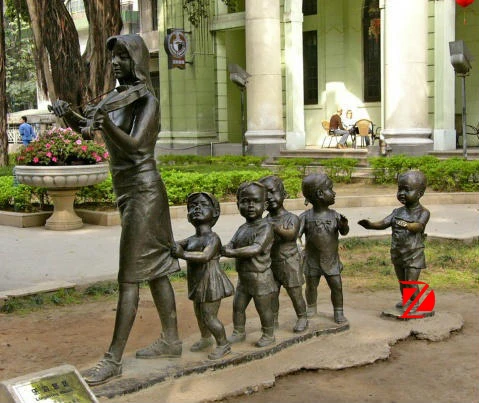
Thank you, very much!
I will have to check into 'Violin Star' & 'Fiddle Time Starters' - I'm sure these will help!
Think my 5 year-old Grandson is ready & interested in violin - and he is an amazing reader. 🤔... I still have to find someone to adjust the soundpost in the ½ size violin we have for him.
- Emily
Regulars
 Offline
Offline








MUSIC MATH WORKSHEETS for kids starting to learn math!
I think having kids understand the relationship between math and music is important - might as well start early!
I like these, available at "Teachers Pay Teachers", plus there are MANY more.
https://www.teacherspayteacher.....worksheets
Also I saw there are many places you can find general music worksheets for free online.
- Emily
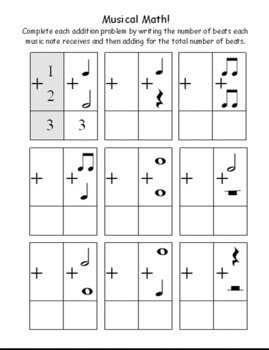
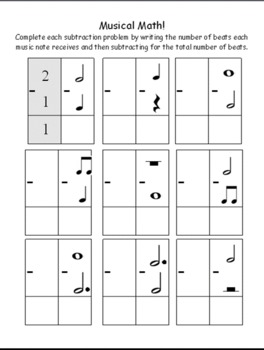
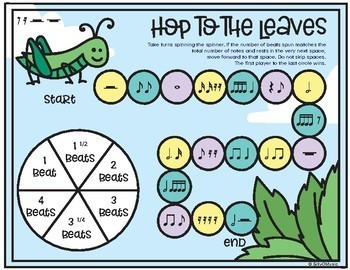
Regulars
 Offline
Offline





Sorry, but that has scrambled my brain.
Let kids sing. Teach them to imitate singing on an instrument.
----------------------------------------------------------
Here's something to meditate - when I was about 30 I was pretty good at art and I studied etching at nightschool for 3 or 4 years. But some of the attendant artists hated it because it wasn't direct enough and they wanted to be closer to what they were working on - the processes of working on the plates and the inking and printing distanced them from the immediacy of art. Maybe music is like that - some aren't suited to an instrument that distances them too far from the act of singing?
Andrew
Verified human - the ignominy!
1 Guest(s)


 Log In
Log In Register
Register








